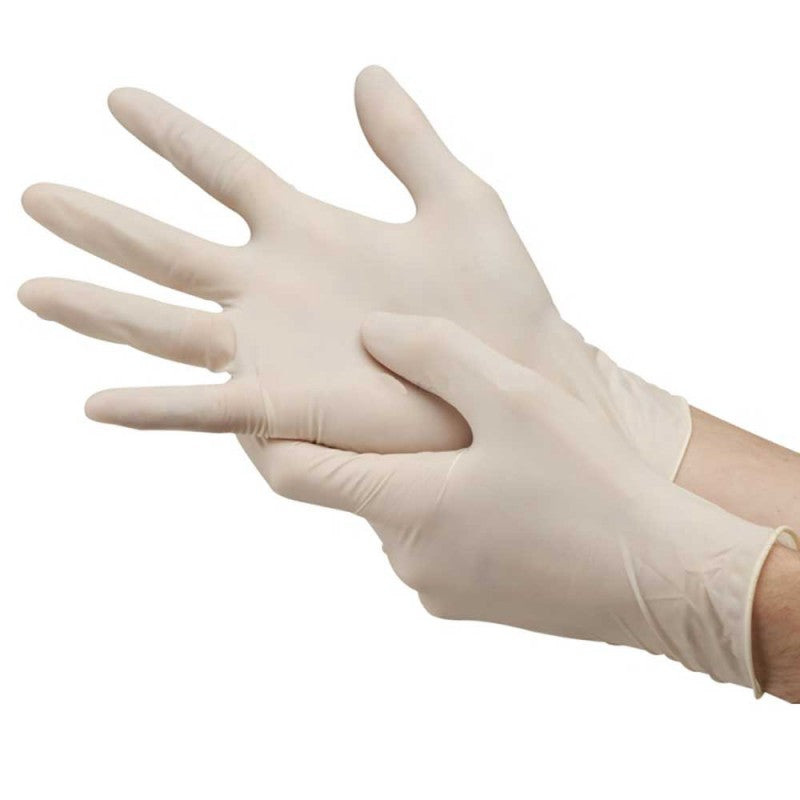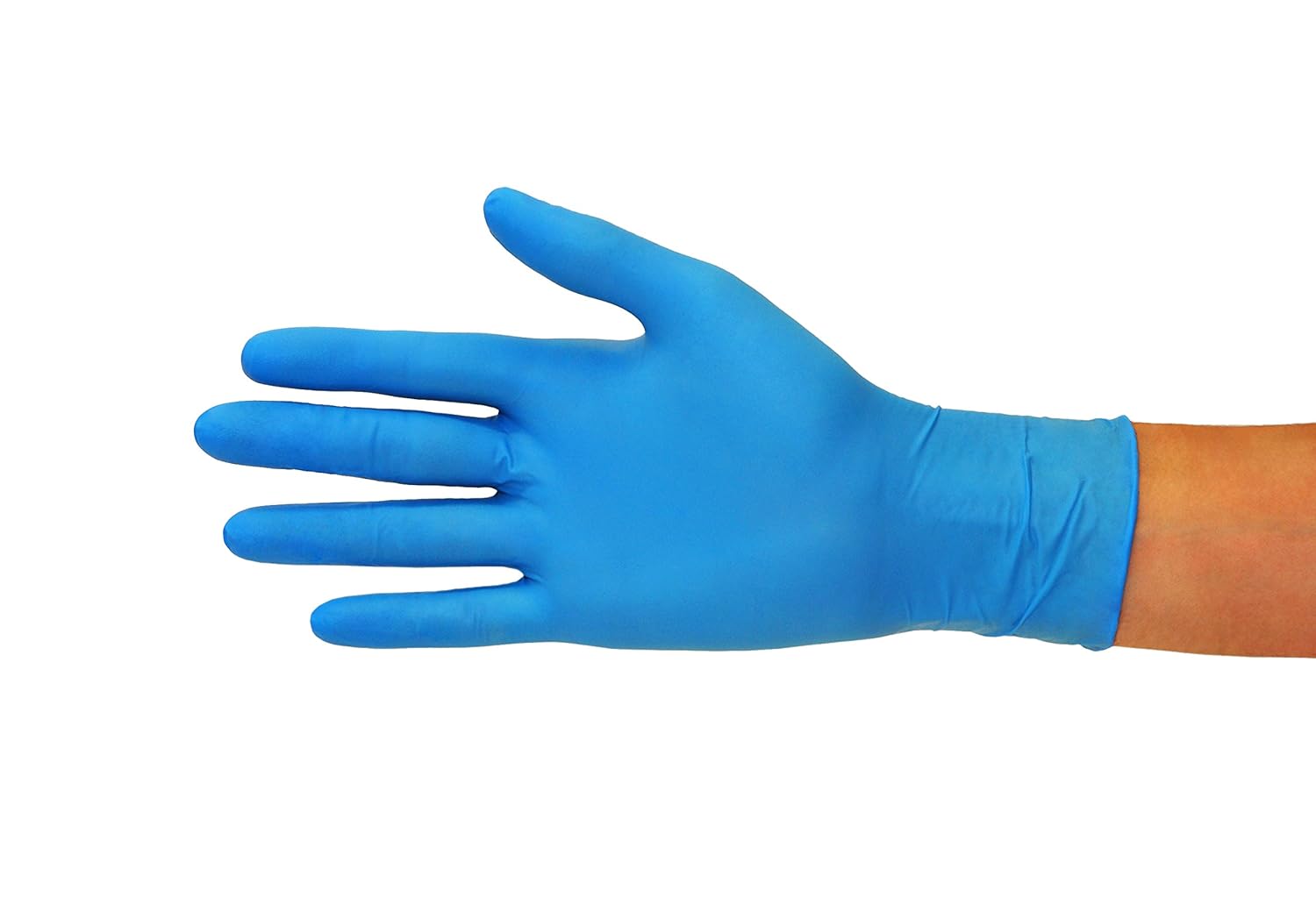When it comes to personal protection, having the right gear is crucial. Nitrile powder free gloves have become increasingly popular for their reliability and comfort, making them the go-to choice for various applications. Whether you work in healthcare, food service, or any other industry requiring protection, nitrile powder-free gloves offer a safe and effective solution. In this blog post, we will explore the many benefits of these high-quality gloves and why they are a must-have for durable and comfortable hand protection.
Understanding Nitrile Gloves and Their Advantages
Nitrile gloves, made from synthetic rubber, are known for their exceptional resistance to punctures, abrasions, and various chemicals. This feature makes them ideal for use in environments where durability and protection are essential. Unlike latex gloves, nitrile gloves do not contain latex proteins, making them the perfect choice for individuals prone to allergies or sensitivities to natural rubber. Another significant advantage of nitrile gloves is their tactile sensitivity. This quality ensures that wearers can perform intricate tasks with high precision without compromising safety or dexterity.
Additionally, their robust composition does not sacrifice comfort for security, providing a snug and responsive fit that adapts to the wearer’s hands. The absence of powder in these gloves reduces the risk of contamination in sensitive environments and eliminates the potential for allergic reactions associated with powdered varieties. Nitrile’s synthetic nature also contributes to a longer shelf life than latex, making these gloves a cost-effective and reliable choice for consistent protection. The combination of these properties highlights why nitrile powder-free gloves are celebrated for their versatility and effectiveness in safeguarding users across many sectors.
Why Powder-Free Gloves Are the Future
The trend towards powder-free gloves is driven by a growing awareness of the health implications associated with powdered varieties. Traditionally, powdered gloves were favoured for their ease of donning and moisture absorption. However, the powder, often made from cornstarch, has been implicated in causing respiratory issues and skin irritations for both the wearer and patients in healthcare settings. Furthermore, the powder particles can carry proteins that exacerbate latex allergies, leading to sensitisation and allergic reactions.
Shifting to powder-free gloves reflects a commitment to safer, healthier work environments. By eliminating the powder, these gloves reduce the risk of aerosolising glove powder and latex proteins, significantly lowering the potential for allergic reactions and respiratory problems among users and those in their immediate environment. This evolution in glove preference is not just a trend but a move towards more stringent health and safety standards across industries where hand protection is paramount.
Moreover, advancements in glove manufacturing technology have improved the ease of donning powder-free gloves, rendering the primary advantage of powdered gloves obsolete. The industry’s response to health concerns and the development of innovative, user-friendly solutions underscore the importance of powder-free gloves in setting new benchmarks for safety and protection in various sectors. The move towards powder-free gloves clearly indicates their role as the future standard for hand protection, aligning to minimise health risks and enhance safety for all users.
 The Versatility of Nitrile Powder-Free Gloves
The Versatility of Nitrile Powder-Free Gloves
Nitrile powder-free gloves are renowned for their wide-ranging usefulness, catering to various sectors and tasks. Their formulation from synthetic rubber confers an unparalleled resistance to various chemicals, pathogens, and other potential hazards, making them an essential protective tool across many professional landscapes. Healthcare professionals benefit from their robust barrier against biological contaminants, while those in the food industry appreciate the gloves’ compliance with safety standards, ensuring food handling is conducted hygienically. Laboratory technicians and scientists rely on these gloves to resist various chemical solvents and compounds, safeguarding their hands during intricate experiments and procedures.
Furthermore, the application of nitrile powder-free gloves extends beyond these fields into janitorial services, where workers are protected from cleaning agents and potential biohazards, and the beauty industry, where they prevent cross-contamination between clients. Their adaptability is further evidenced in the automotive and manufacturing sectors, where they withstand oils, greases, and other industrial substances. This versatility is not just a testament to the gloves’ protective capabilities but also underscores their role in promoting hygiene and safety across varied professional activities, ensuring that workers in virtually any field can perform their duties with confidence and assurance, fully protected by the superior qualities of nitrile powder-free gloves.
Sizing and Fit: Finding the Perfect Glove
Securing the correct size in nitrile powder-free gloves is critical for ensuring both comfort and efficacy in protection. These gloves are produced in various sizes, catering to various hand dimensions to guarantee a proper and snug fit for all users. To identify the most suitable size for your hands, it’s imperative to take precise measurements of your hand. This ensures the glove is neither excessively tight, which could hamper movement and lead to discomfort, nor too loose, risking a breach in protection due to slippage. A well-fitted glove enhances the wearer’s skill, allowing for seamless performance of tasks without interference. It’s beneficial to try on several sizes, if possible, to find the glove that best conforms to the contours of your hands, ensuring a balance between mobility and security. Opting for the correct size elevates comfort during wear. It maximises the protective capabilities of the nitrile powder-free gloves, allowing users to carry out their duties with confidence and precision. This attention to fitting is a key step in the selection process, underlining the importance of personalisation in protective gear for optimal performance and protection.
Durability and Performance Under Pressure
Nitrile powder-free gloves excel in environments that demand robust hand protection. These gloves are manufactured from synthetic rubber and boast an exceptional capacity to resist punctures and tears, a crucial attribute in settings where users frequently handle sharp instruments or rough materials. Additionally, their resistance to a broad spectrum of chemicals makes them indispensable in laboratories, healthcare facilities, and industrial workplaces, where exposure to potentially harmful substances is routine.
The resilience of nitrile powder-free gloves under challenging conditions does not come at the expense of the wearer’s comfort. Their design ensures that the gloves remain intact even in the most demanding situations, safeguarding the user’s hands without splitting or failing. This attribute is particularly valued in professions where durability cannot be compromised, such as medical procedures, scientific research, and industrial applications.
Moreover, the gloves’ performance under pressure extends beyond physical barriers to hazardous materials. They maintain their integrity in varied temperature ranges, ensuring reliable protection even under extreme conditions. This resilience, coupled with their ability to provide a secure grip, makes nitrile powder-free gloves a preferred choice for those whose work puts them at risk of contact with oils, solvents, and other aggressive agents.
Their steadfast performance in the face of such pressures confirms the critical role that nitrile powder-free gloves play in professional settings. They embody a perfect blend of durability, protection, and comfort.
Maintenance and Disposal: Best Practices
Ensuring the longevity and efficacy of nitrile powder-free gloves requires adherence to stringent maintenance and disposal protocols. After usage, it’s imperative to carefully remove the gloves to avoid any contamination. Disposing them promptly in designated waste receptacles is essential, adhering to the specific guidelines and regulations set forth by local health and safety authorities. Reusing single-use gloves is highly discouraged, which can significantly diminish their protective qualities and pose health risks. To maintain the condition of unused gloves, they must be stored properly in a cool location and devoid of direct sunlight or moisture, which could lead to material degradation. Compliance with these practices is not only about preserving the integrity of the gloves but also ensuring that they continue to provide the necessary level of protection until their disposal. This proactive approach towards maintenance and disposal underscores the commitment to safety and hygiene, which are crucial for preventing cross-contamination and ensuring a secure working environment for all users.
How to Spot High-Quality Nitrile Gloves Disposable?
Identifying high-quality nitrile gloves disposable requires a discerning eye for several key characteristics defining their superior performance and safety standards. Firstly, one must examine the glove’s material integrity, ensuring it is robust and free from any visible defects or imperfections that could compromise its protective function. A uniform texture and consistent thickness across the glove indicate a meticulous manufacturing process.
Certification labels are pivotal in affirming the gloves’ compliance with regulatory standards. Look for approval marks from recognised health and safety organisations, which validate the gloves’ efficacy in providing the requisite level of protection against chemicals, punctures, and biological hazards. These certifications testify to the gloves’ quality and reliability in various professional settings.
Another essential factor is the glove’s fit and tactile sensitivity. High-quality nitrile gloves are engineered to offer a snug fit that mirrors the contours of the hand, enhancing comfort and dexterity. This attribute is particularly crucial for tasks requiring precision and a delicate touch, enabling users to perform their duties efficiently without hindrance.
Additionally, assess the gloves’ resistance to tearing and puncture. Superior nitrile gloves demonstrate remarkable durability, even under strenuous use, ensuring users’ hands remain protected against potential risks. This resilience indicates a high-quality glove designed to withstand the challenges of demanding environments.
Prioritising these critical aspects when selecting high-quality disposable nitrile gloves will guide you towards products that assure optimal performance, safety, and user satisfaction.
Conclusion
In the realm of hand protection across diverse sectors, nitrile powder-free gloves stand out for their unparalleled durability, tactile sensitivity, and adaptability to various professional needs. The synthesis of these properties in a single product underscores its importance and indispensability for ensuring the safety and efficiency of workers in numerous fields. Opting for gloves that meet high standards of quality not only secures the health and safety of the users but also supports the integrity of the work conducted, whether it involves handling hazardous materials, conducting intricate procedures, or preparing food.
FAQs
What industries most commonly use nitrile powder-free gloves?
Nitrile powder-free gloves are prominently used in healthcare, food service, laboratories, janitorial, beauty, automotive, and manufacturing industries due to their chemical and puncture resistance and their allergy-friendly properties.
Can nitrile powder-free gloves be reused?
Reusing single-use nitrile powder-free gloves is not advisable as this can compromise their protective qualities and lead to potential health risks. They are designed for one-time use and should be disposed of after each use according to local guidelines.
How should nitrile powder-free gloves be stored?
Store them in a cool, dry place away from direct sunlight and moisture to ensure their longevity and efficacy. Proper storage helps maintain the gloves’ integrity until they are needed for use.
What makes nitrile gloves better than latex?
Nitrile gloves offer superior resistance to chemicals and punctures and are latex-free, making them a safer option for individuals with latex allergies. They also provide excellent tactile sensitivity and a comfortable fit, making them suitable for various tasks.
| Other Good Articles to Read |
| Blogs-Nation |
| Blogs-Peoples |
| Bryan Smith Blogs |
| intellect blogs |
| the fault in our blogs |
| blogs eu |
| oz forums |
| recruitment blogs |
| zet blogs |
| id blogs |
| Blog Studio legale |
| blogs map |
| Related Business Listings |
| Contact Directory |
| Local Business Profiles |



